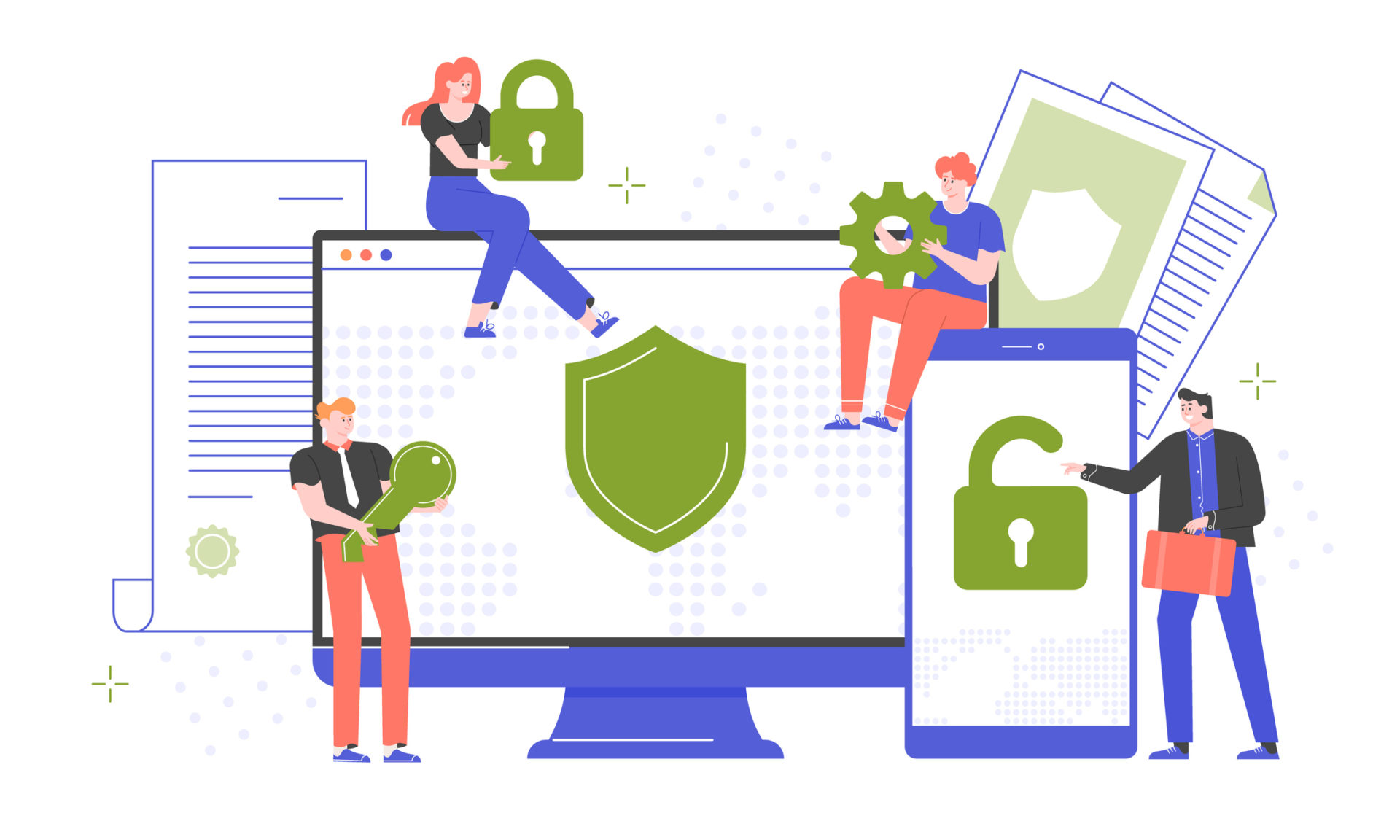
What is digital safeguarding?
A good definition of safeguarding is taking proactive steps to prevent harm and abuse from occurring. At the same time, good safeguarding practice means you’ll know what to do if harm or abuse ever takes place: who to contact, what to tell them, and how to help the person who’s experienced abuse.
So what’s digital safeguarding? It’s the same idea, but in a digital space. Digital safeguarding simply means taking steps to stay safe online.
Why is Digital Safeguarding Important?
In 2020, as a result of enforced government lockdowns, many people in the UK may have spent more time online than ever before. From work meetings to school lessons and exercise classes, many things that we used to do offline we now do online.
Hopefully things will soon return to normal. But even without enforced lockdowns, people in the UK still spend a lot of time online.
According to the Office of National Statistics, in 2019:
- 99% of UK adults aged 16 to 44 were recent internet users, compared to 47% of adults aged 75 or over.
- Only 7.5% of UK adults didn’t use the internet at all.
- 78% of adults with disabilities were recent internet users. For the first time ever, the annual figure exceeded 10 million.
If so many of us are spending so much time online, obviously we need to know how to keep ourselves safe online.
When it comes to safeguarding, prevention is always better than a cure. It’s always better to prevent abuse from happening in the first place than it is to respond to an incident of abuse. Digital safeguarding is no different. We should know how to use the internet safely and sensibly, and we should all be aware of the risks we face online.
Digital Safeguarding Resources
Over the years, we’ve created and collected a number of digital safeguarding resources:
- What is Cyber Bullying? When people use digital services to abuse or harass others, we call it cyber bullying. This post will help you spot the signs of cyber bullying, while also offering tips on how to protect yourself from online bullies. Read more.
- How to Stay Safe Online. A collection of general tips, including advice on online conduct and behaviour, and essential cyber security tips (such as setting a good password!) Read more.
- Safeguarding and Online Youth Work. This helpful guide includes information on using technology to deliver youth work provision and responding to safeguarding risks when working with young people online. Read more.
- Guidance for Adults and Young People with Learning Disabilities. A selection of easy-read guides to staying safe online, with helpful images and clear and simple language. Read more.
- Supporting People Who Have Been Abused Online. It’s vital that we take steps to prevent abuse from happening in the first place. But it’s just as important that we know how to respond to instances of abuse. This is a collection of resources to help parents, guardians, and others in positions of care support young people who have been abused online. Read more.
- Creating Safer Online Spaces. A guide to setting and maintaining safeguarding standards when delivering certain services online, such as teaching or exercise classes. Read more.
- Guidance for Sport and Activity Organisations when Delivering Activities Online. Clubs providing online activities need to be aware of the welfare and wellbeing of their participants when conducting activities online. Please note – this post was written in response to the first enforced government lockdown in 2020. But we feel the advice and guidance is still relevant. Read more.
- Beware of Online Scams. Though this resource refers explicitly to the scams that appeared in the early days of lockdown, it’s still a good introduction to the sort of techniques online criminals use to exploit others. This will give you an idea of the sort of red flags you should look out for to determine whether something is authentic, or a scam. Read more. You can also explore Age UK’s guidance about how to protect yourself from online scams.
- Photography Guidance. Is it illegal to take a picture of a child or young person under 18? Not necessarily. But there are still precautions you should take when taking and sharing photos of yourself and others. Read more.
More Digital Safeguarding Resources
What sort of digital safeguarding resources would you like to see?
If you need further guidance for staying safe online, please get in touch to let us know.
